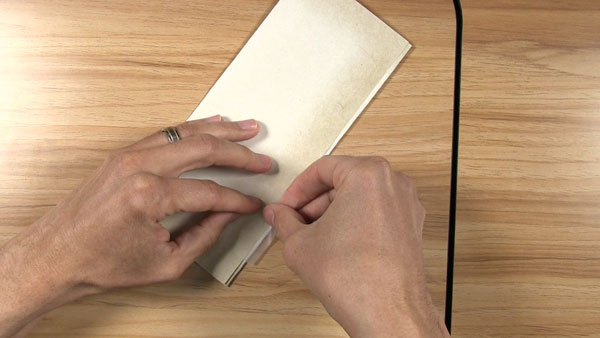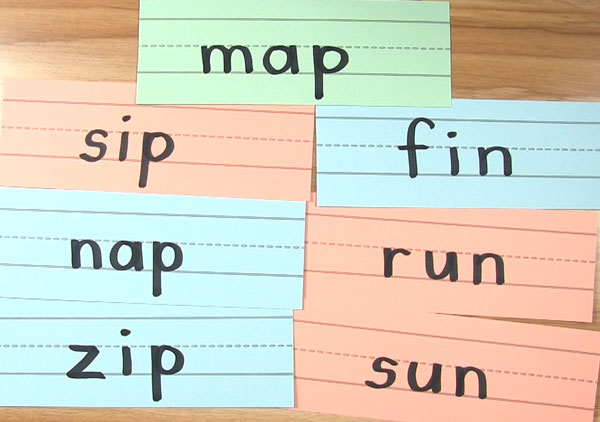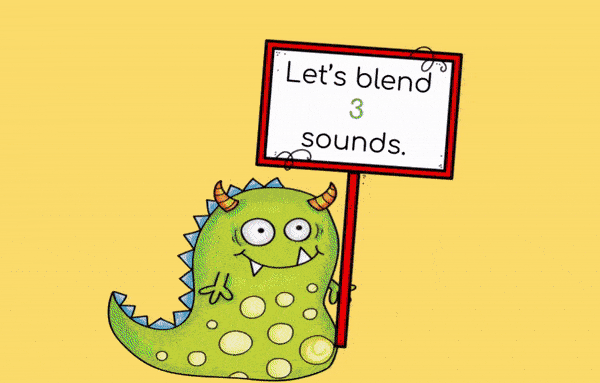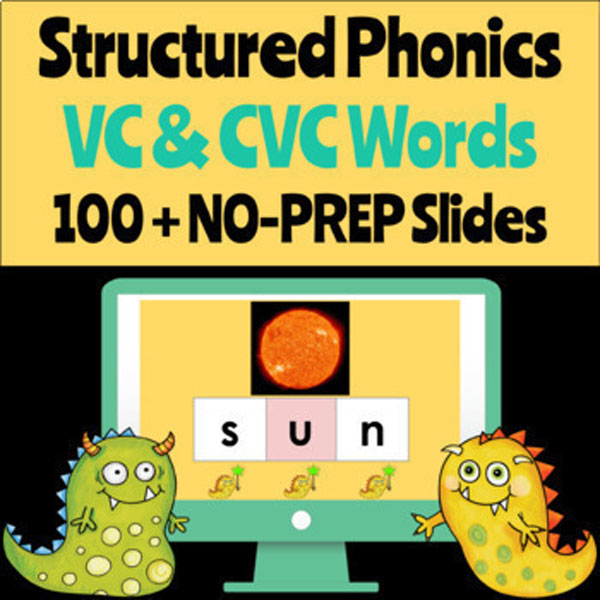Do you have students who have difficulty blending sounds in words? Children who sound out /m/ … /a/ … /p/ and then call out a word such as “man”, “pan”, or even “pig”?
Odds are that these students’ working memory is maxed out. They’re either taking the first letter and rolling with it, saying the first thing that comes to mind (any familiar word beginning with the letter m), or they’re remembering the last sound or two and guessing at the rest. Decoding is exhausting for these students.

For these emerging readers, their time spent trying to read words is filled with struggle and error. They end up feeling frustrated, expressing their feelings of failure by telling their teachers or parents things like, “I can’t read” or “Reading is too hard”.

So, how do we help?
We might think our students just need more time practicing the sound-by-sound blending process and they’ll eventually be able to get the words right. This is sometimes the case.
But if you’re looking for strategies that can get children successfully decoding faster, and help erase those damaging “I can’t read” feelings, I would suggest trying the continuous blending technique.
Why Continuous Blending Is Important
First, the research. In one recent study by Gonzalez-Frey and Ehri, students who were given explicit instruction in continuous blending (connected phonation, to be technical), were able to decode words more accurately and fluently than those who were taught to sound out words in a choppy way (segmented phonation). Think “Ssssssaaaaaammmm” instead of /S/ – /a/ – /m/. Continuous blending was the clear winner.
Why? In short, when students break apart the sounds, leaving space in between, they tend to forget the first sound. This is almost guaranteed for students with weak memories. With no pauses between sounds, however, it’s easier for children to hear the word they are trying to form. So, it’s more likely that they’ll remember how they started and read the word accurately.
The more success our students have reading words, the greater their motivation will be to continue learning, and the better they’ll likely feel towards reading.

What Does This Mean for Teachers?
This means that we should train students to say each sound in a word WITHOUT breaking the speech stream. Model how to really stretch out and HOLD onto each sound until you get to the next.
According to research, even when the words contained stop sounds like /p/ or /t/, students who were taught this habit still performed better. The skill had transferred to reading in general, in other words.
After many years of teaching students to “tap out” words (tapping a finger or touching a letter tile while saying each sound), the continuous blending process was new to me. But after learning about the technique and reading more about the research, I was convinced it was worth a try.
Simple Solutions to Implement Continuous Blending
Here are three easy activities to try:
1. Letter Slide
To introduce the skill, I told my students we were going to learn a way to help read words more easily. I modeled the reasoning behind it by placing 3 magnetic letter cards (for the letters m, a, p) spaced really far apart on my whiteboard. I said each sound as I pointed to each letter, dramatically pausing in between each, as I slowly walked past each letter.
When I got to the end (after saying the /p/ sound), I said that if there’s too much space and time in between the sounds, it can be easy to forget the sounds the letters way over there made (pointing to the first letter). But if we smush or slide one sound into the next, without leaving any space in between, it’s easier to hear the word that the sounds are trying to make.
Then I physically pushed one letter card into the next, while I said the sounds without any pauses in between, and said, “OH! I hear the word map!”
If you have magnetic letter cards or tiles, just space them far apart on your whiteboard. Then ask students to take turns coming up to the board to slide them together. As the child physically slides the first card into the next, everyone can say and hold onto the sound until one card touches the next.

As a variation, you may put letter tiles or blocks on an actual toy slide or draw a simple slide on your whiteboard. Show how the continuous blending strategy works by physically moving one letter into another. Encourage everyone to hold onto each sound as the letter travels down the slide.
2. Mystery Word

This fun and effective way to practice the continuous blending strategy with students involves just a few pieces of paper and a stapler or tape.
First, take a blank (or decorative) piece of paper and fold it into an open-ended envelope, like this:

Tape or staple the back to secure the fold.

You may even decorate your envelope, if you wish!

Then, write any words your students need to practice onto strips of paper. You may cut up sentence strips instead, if you have them.

To begin the activity, I refered back to my example of the spaced-out letter cards, and how it was easier to read when I pushed one sound right into the next. Then I told my students that now it was their job to use that same process with the words that were hidden inside the envelope.
They had to figure out the mystery words, not by guessing, but by HOLDING on to each sound until the next letter was revealed. Model what you expect from your students. Say mmmmmmaaaaaaap.

Then, show a non-example, where you drastically pause several seconds in between each sound /m/ … /a/ … /p/, making the sounds extra choppy for effect. Ask students which way will help them hear and read the word more easily? The holding on, stretching the sound way, or the choppy, broken-up way?
Next, give students a chance to practice this process with 5-10 word cards/strips that you’ve placed inside the envelope. Slowly reveal each word as you pull out the strip. If they stop after saying one sound, remind and encourage them to hold onto the sound until they see the next letter.
You can use the same cards day after day, pulling them out a little more quickly each time. Or you can add new words into the mix, based on the phonics skills you are teaching.
3. No-Prep Practice
Even though the continuous blending strategy works when students are decoding words with stop sounds such as /p/ or /t/, I wanted to ensure happy feelings of success in my readers who struggle with blending, so my first digital lesson only included beginning continuant sounds.
If you aren’t familiar with continuant sounds, they are just the sounds that you can easily hold onto (ssss, zzzz, ffff, vvvv, mmmm, etc.) along with the vowels. Using these initial sounds and the short vowels, I created 100 slides, beginning with VC words like at and on, and working up to CVC words, like sip, fin, map, and run, building confidence in my kids along the way.

Simply open up the slides in present mode, and click on through. Make sure you can see the speaker notes, which include prompts and example sentences that use the words in context. Just pull them up on your screen as your students are looking at each slide.
This presentation includes phonemic awareness, decoding, encoding, mystery picture, and sentence activities. If all of your kids have already mastered these skills, then that’s wonderful! You can add it to your Google Drive and save it for the beginning of next school year. You can get your own free copy by clicking on the image below.
Final Thoughts on Continuous Blending
The decoding process is slow and frustrating for many emerging readers. Our brains are not naturally wired for reading, as they are for speaking. As teachers, we must provide explicit instruction and opportunities for success for our students.
By delivering effective blending strategy instruction and implementing some of the activities discussed here, students will be better able to make connections between printed letters and real words. We will help students create neural connections between the visual and spoken language areas of the brain, which leads to efficient reading.
I’ve found the continuous blending strategy to be very helpful for my emerging readers who have a hard time decoding. I hope you find success with it as well, and I wish you luck in creating a classroom full of happy, motivated readers.



